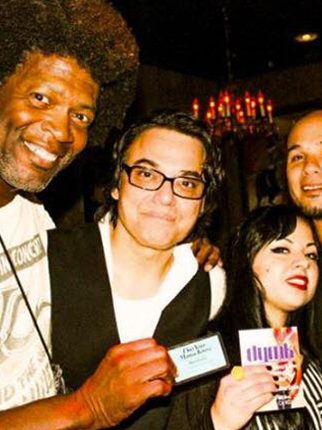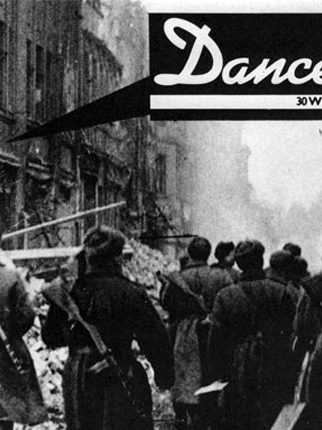New York Nightlife Gone: Area 1983–1987
A woman is lying on a silver platter. The platter is on a linen-covered table. There are lit candelabras, wait staff, and seated men in tuxedos. The prone woman has a lobster covering her vagina and another on her stomach. There are grapes and lettuce leaves and various fruits, seafood and tomatoes. The men are eating the fare, which is covering less and less of her as the evening goes on. This tableaux, staged by artist Magdalen Pierakkos, was an element of a Fellini-inspired party at Area, was a uniquely New York club which radically changed its décor and motif every six weeks.
Area promised a new world where Art was a place you could go that stayed open late, served drinks and had dancing, and where you might just get lucky. - Glenn O'Brien
Area had theme nights—“Darkness,” “Garden,” “Confinement,” “Gnarly” and “Suburbia,” among others—and for the openings, the art directors and staff went full-bore to pull it off. “Reckless abandon and no sleep were the M.O. to get things done,” says co-owner Eric Goode. (Goode, his brother Christopher, Shawn Hausman and Darius Azari were the club’s founders.) “Every time you came for a new opening, the transformation was always sooo impressive,” says Johnny Dynell, who along with Justin Strauss, were the two main DJs.
“I remember the garden-themed night as being incredibly comprehensive, really well done,” says Dynell. “I played Vivaldi. The feeling of that music and the lush setting created such an amazing moment, a real sense of theater.”
“The owners treated us like artists,” remarks Strauss. “We were able to play what we wanted. The theme was a definite jumping-off point, but as the night progressed, it would just become a great party.” Strauss and Dynell played the main room on a Richard Long sound system. In the smaller room, a variety of artists and nightlife denizens would spin. Dynell remembers: “Jean-Michel Basquiat was in the small room one night, and he was playing some very heavy jazz: Ornette Coleman, John Coltrane. I said to him, ‘Jean-Michel, give the crowd something they can hang on to a bit.’ He said to me, ‘If they can’t dance to John Coltrane, they can’t dance.’”
It was so inspiring, having Keith Haring painting live, people like Warhol and Lichtenstein there, all the great performers. You wanted to push boundaries and react to all the creativity in the room.
“The sense of freedom and creativity was really remarkable,” says Strauss. “As DJs, we were a component of the proceedings, but we had license to follow our own ideas and make people get down. It was so inspiring, having Keith Haring painting live, people like Warhol, Barbra Kruger, and Larry Rivers contributing work, all the great performers who added to the nights, the tremendous tableaux, you wanted to push the boundaries and react to all that creativity in the room.”
Area became renowned, not just for its salon-like mix of art and theater, high and low, but also for an attendant debauchery that was provocative yet witty. They had a unisex restroom, where they eventually installed a bar. Area also managed to get both an uptown and downtown crowd and had an off-handed glamour that seemed incidental to the created content of the venue.
“I remember this woman coming up to the booth one night,” recalls Dynell. “She was model stunning but had a very bohemian vibe. She said it was her birthday, and she really wanted to dance. It took me a minute to realize it was Joni Mitchell. She was low-key and with her husband and Herbie Hancock. No one bothered them, and she and I cut loose on the floor for the rest of the night. She was so unbelievably cool and really into the music.”
Area attracted a range of noted patrons—artists, musicians, actors, Malcom Forbes?!!!—but its core had a camp- and punk-seasoned sensibility. It was a sensibility that storied spots like the Mudd Club or Max’s Kansas City also had—one with its own hierarchy that prized an authored concept over the vacuity of circumstantial celebrity or the transience of bland servitude. It ran a short four years but reflected the complexity, humor, sleaze and artistic toughness of NYC.




